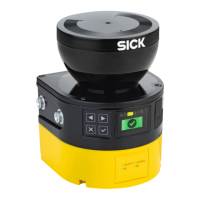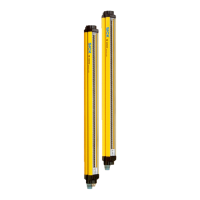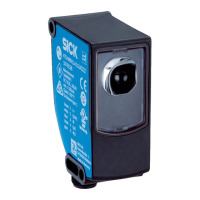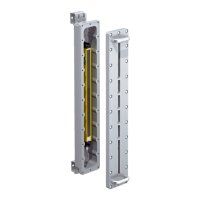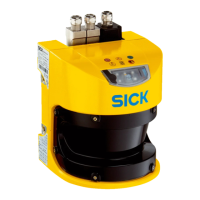Important information
DANGER
H
azard due to lack of effectiveness of the protective device
Reflective surfaces and dispersive media can prevent persons or parts of the body to
be protected from being properly reflected and, therefore, remain undetected.
b
Make sure that all reflective surfaces and objects maintain a minimum distance
from the protective field.
b
Make sure that no dispersive media (e.g., dust, fog, or smoke) are within the calcu‐
lated minimum distance from the protective field.
Determining minimum distance to reflective surfaces
T
he minimum distance can be determined as follows:
b
Determine the distance between the twin sticks D in meters (m).
b
Read the minimum distance a in millimeters (mm) in the graph or calculate it
based on the respective formula table 3:
1000
900
800
700
600
14 16 18 20 22 242 4 6 8 10 12
500
400
300
200
100
0
0
D/m
a/mm
Figure 15: Graph of minimum distance from reflective surfaces
T
able 3: Formula for calculating the minimum distance from reflective surfaces
Distance D between twin sticks in m Calculation of the minimum distance (a) from reflective
sur
faces in mm
D ≤ 3 m a = 131 mm
D > 3 m a = tan (2.5°) × 1000 mm/m × D = 43.66 × 1 mm/m ×
D
Further topics
•
"W
eld spark guard", page 99
4.3.4 Minimum distance for cascaded systems
Overview
In a c
ascade, the codes of the individual participants are automatically set to code 1 or
code 2 in alternation.
In a cascaded system with a protective field width of up to 3 m, a minimum distance of
262 mm between the host and guest 2 must be upheld during mounting.
4 P
ROJECT PLANNING
26
O P E R A T I N G I N S T R U C T I O N S | miniTwin4 8012624/10OM/2018-08-09 | SICK
Subject to change without notice
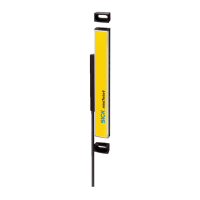
